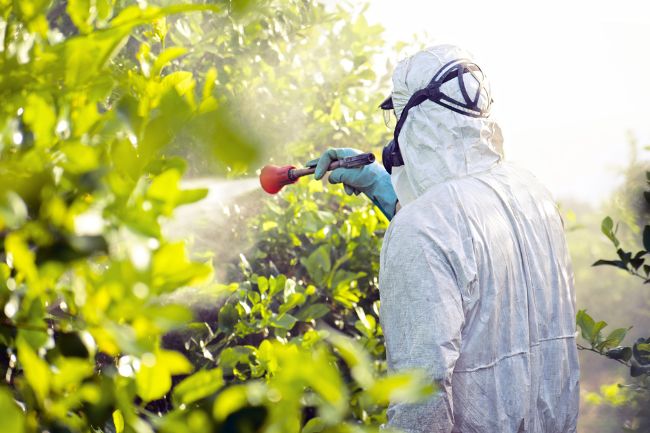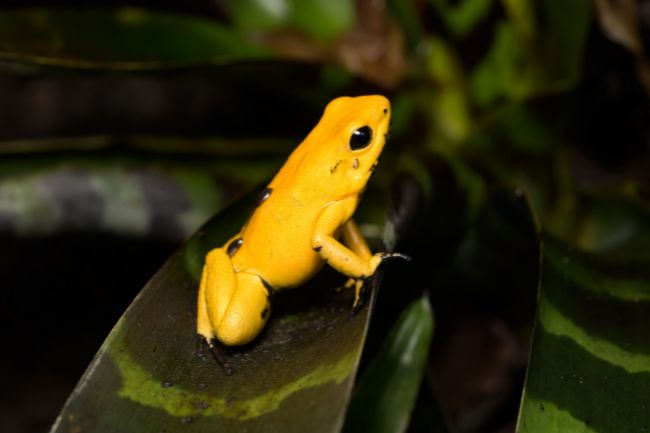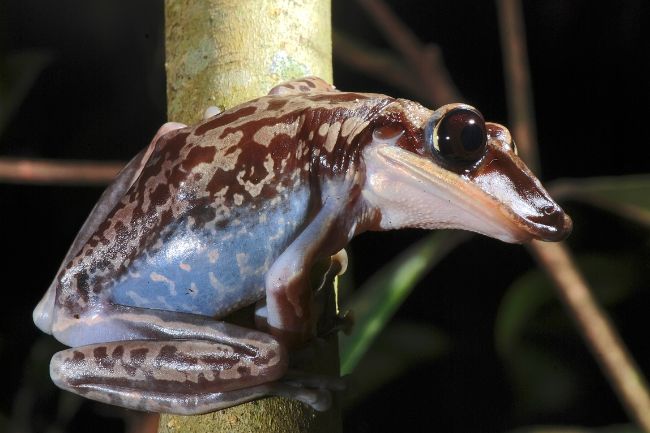It is well known that many frogs are able to exude their own poisons, usually excreted through glands in their skin. Some of these poisons can even result in the death of any human that imbibes it. But the question is what is the most poisonous frog in the world?
Poisons found in frog species have been exploited by humans for thousands of year, in rituals, for hunting and even as medication. But while these poisons can have their uses, they can also be deadly if abused.
Also read: Are Caterpillars Poisonous? Are they Dangerous? (Explained)
What is Poison?
A poison is a chemical, or mixture of chemicals, that is harmful to the living creature that comes into contact with it. This contact may be through a surface contact, or through ingesting the poison. Both plants and animals can be poisonous.

Humans reguarly use poisons to dispose of unwanted plants and animals, such as putting out rat poison, or spraying pesticides on plants. Many poisons occur naturally, as a defence evolved by living creatures to prevent others from attempting to consume them, or competing for resources.
A venom is a kind of poison that’s administered through a bite. Common animals that utilise venom include snakes, slow loris and jellyfish. Though venom is often associated with fangs, some animals introduce it with stingers or spines.
Poisons can come in many different chemical compositions and have a variety of effects. Many poisons are designed to affect animals of a specific size, so larger animals are less likely to be effected.
Most poisons are fairly weak, often designed to make an animal feel ill, or regurgitate what it has eaten. Strong poisons can destroy an animal’s nervous system, or cause their organs to shut down. Most of these poisons, if untreated, will lead to death.
The Most Poisonous Frog in the World
One group of frogs that is particularly well known for their toxic talents are the poison dart frogs. These tiny frogs are often brightly coloured, something that is unusual in the frog world. Many frogs choose to remain camouflaged, using browns and greens to help them blend into the background.
Poison dart frogs however, can often come in reds, yellows and bright blues. These vibrant colours are wonderful to see, but actually act as a warning signal to any animals who think they might like a bite, letting them know these little frogs are deadly.

One of the most poisonous of this group is the golden poison frog. Fairly large, for this often diminutive group, at around 2 inches in length, this beautifully yellow frog looks like it wouldn’t hurt a fly. Yet a single frog could take ten grown men to their grave.
The golden poison frog is found in South and Central America, usually living on the forest floor within rainforests. It’s this amazing potency that caused indigenous tribes to tip their blowdarts with these secretions, in order to bring down prey.
Also read: Evolution of Frog Skin: Do Frogs Have Scales?
Poisonous Frogs
Poisonous frogs tend to exude the toxins through their skin. This means that if a larger animal were to eat them they would immediately come into contact with the poison. In the best case scenario this would mean that the animal immediately regurgiated the frog without harming it. Poisons are often unpleasant tasting, meaning that poisonous animals sometimes survive an attempted attack.
Their bright skin, and often striking patterns, help to warn potential predator of this poison. Although some predators may not at first recognise these warning signals, one unpleasant meeting with a poisonous frog will mean they will remember and avoid it in future, if they survive.
This defense is very important to many frog species, as they generally don’t have any other way to defend themselves, such as claws or teeth. Many frogs simply opt to remain hidden, keeping themselves well camouflage or tucked away.
While most frogs are poisonous, there are two very unusual frogs that are also venomous. These frogs have bony protrusions on their heads that burst through the skin when pressure is applied. This means that if an animal were to try and eat them these protrusions would cut into their skin, taking the poisons from the frog’s skin into the body of the animal, essentially injecting them with it. These frogs are known as Bruno’s casque-headed frog and Greening’s frog.

Most poisonous frogs are found in Central and South America, often in tropical rainforests. This may be because these environments are so competitive, and required additional advantages to thrive.
Some examples of poisonous frogs include the blue poison dart frog. A brilliant blue frog, that is covered in black speckles. Like the golden poison frog it’s deadly to humans, though it’s only able to take down one at a time. This striking frog is found in South Suriname and Brazil.
The phantasmal poison frog is only half an inch in length, and yet could kill a grown human with it’s poisonous cocktail. It has a striking colouration, with cream stripes on a brown body.

Poison Potency
It was long thought at poisonous frogs made their own toxins, however, it has since been found that they get it from their prey, such as ants and mites. This is why these frogs can be kept perfectly safely as pet as long as they aren’t fed their toxic dinner.
Poison frogs use a range of different alkaloid poisons, including batrachotoxin, such as used by the golden poison frog, pumiliotoxins and epibatidine. These different toxins can have a range of effects, from causing nausea and swelling, to paralysis or even death.
Amazingly poisonous frogs avoid poisoning themselves through specially evolved adaptations, that block the toxin from effecting their bodies as they would that of a predator.
Also read: Are Frog Warts Transmittable to Humans?
Conclusion
There are over 170 poisonous frogs known across the world, most of these being poison dart frogs. When it comes to what is the most poisonous frog in the world, the answer has to be the golden poison frog, as beautiful as it is deadly.
However, these little frogs really don’t mean humans any harm at all, instead simply wanting to live out their lives in peace, with a big warning sign above their head to leave them alone.
Yet, many of these beautiful and fascinating species are under threat, slowly disappearing due to destruction of their habitats, pollution or illegal collecting.
It’s not only important to save these species because of their intrinsic value, but many frog poisons may hold surprising answers for us in terms of medical research, potentially helping to cure illnesses or manage pain.
Therefore while we may think a tiny frog that can kill ten men is scary, the truth is they have much more to be scare of in us, then we do in them.

